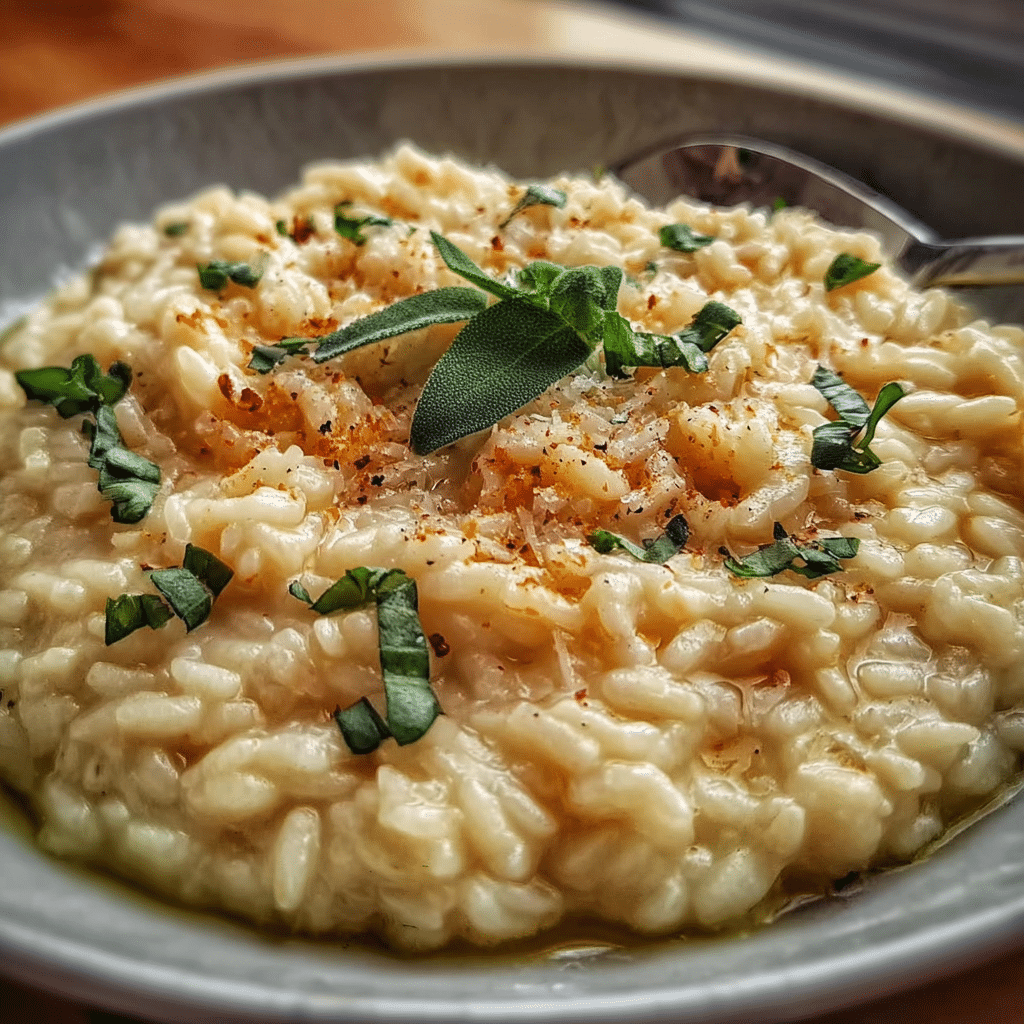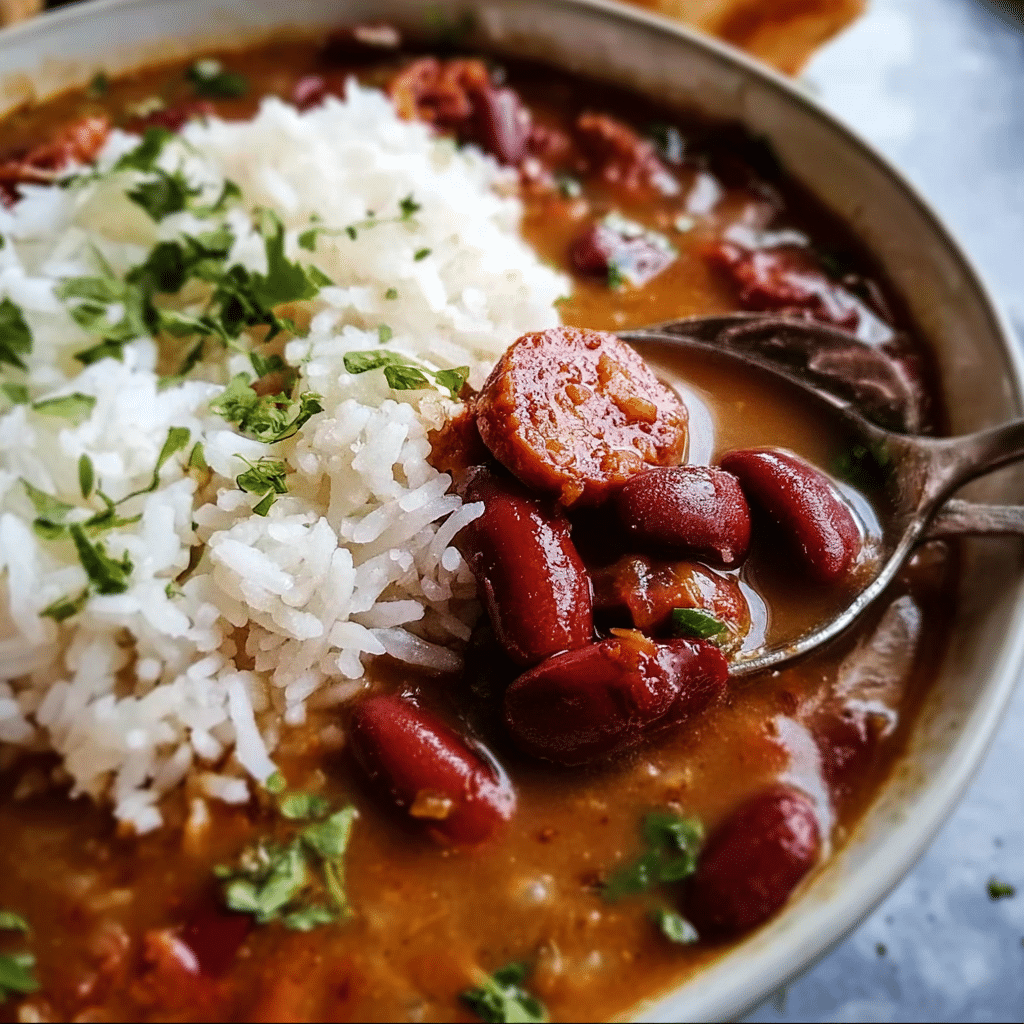Roasted root vegetables are a delightful way to bring warmth and comfort to any meal. I still remember the first time I stumbled upon this culinary gem while flipping through an old family cookbook. The page, slightly yellowed with age, was adorned with a vibrant photo of golden roasted carrots, earthy beets, and parsnips glistening with olive oil. At that moment, I was transported to my grandmother’s kitchen, where the aroma of her roasted vegetables would fill the air, signaling that dinner was ready and the family was invited to gather around the table. Little did I know then that roasted root vegetables would become a staple in my own cooking repertoire, a dish that embodies not just nourishment, but memories and love.
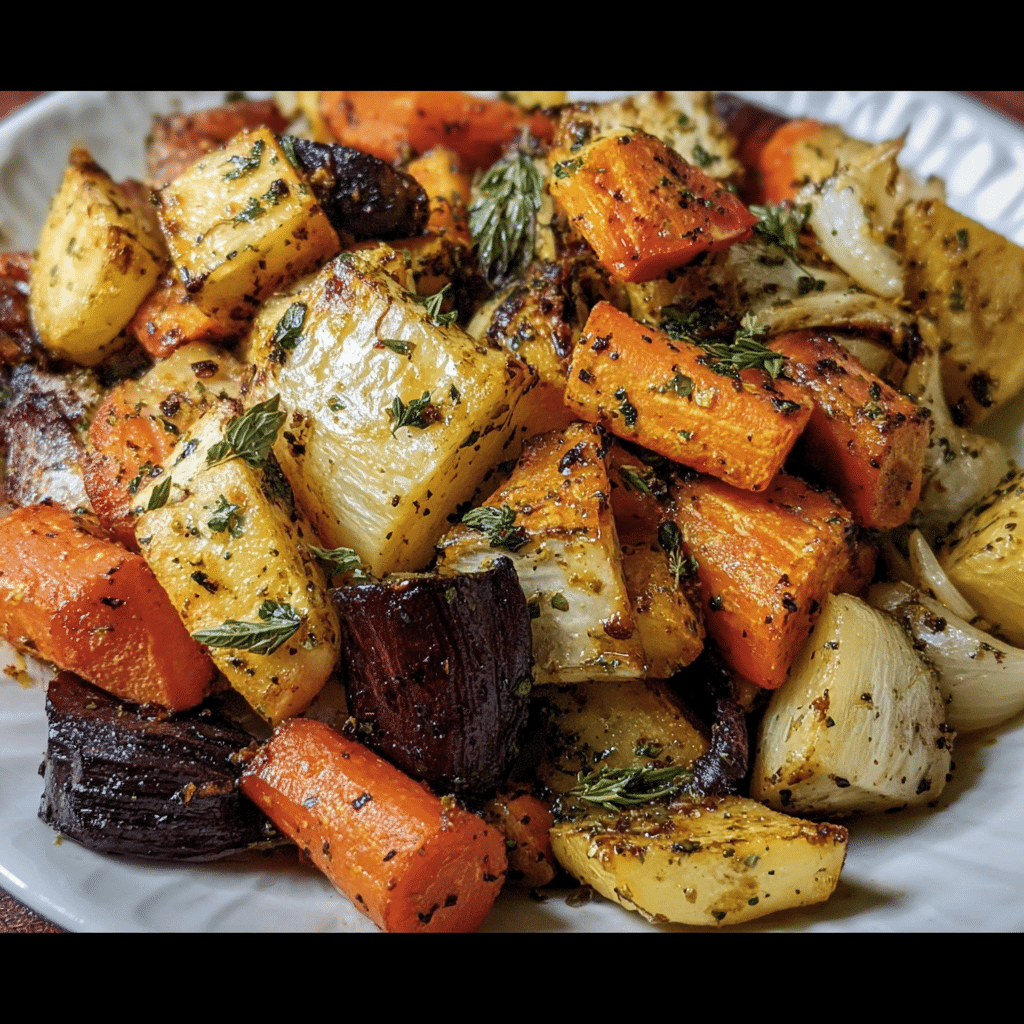
The Story Behind This Recipe
My journey with roasted root vegetables didn’t begin as a culinary adventure; it started as a necessity. Balancing work, family, and the never-ending list of household responsibilities often left little time for elaborate meal prep. One chilly autumn evening, with the sun dipping below the horizon and the air tinged with the scent of fallen leaves, I frantically searched for a recipe that was both simple and satisfying. The vibrant array of root vegetables at the local farmer’s market caught my eye—sweet potatoes, turnips, and carrots, all begging to be transformed into something magical. I tossed them in a bowl with some olive oil, salt, and a sprinkle of thyme, placed them in the oven, and waited. The result was a colorful, caramelized array of roasted root vegetables that not only filled our bellies but also warmed our hearts. That evening became a turning point in my cooking journey, reminding me that sometimes, the simplest dishes hold the most profound flavors.
Roasted root vegetables hold a special place in many cultures around the world. From the hearty stews of Eastern Europe to the vibrant vegetable medleys of the Mediterranean, these humble ingredients have been cherished for centuries. The origins of roasting vegetables can be traced back to ancient civilizations, where cooking over an open flame was the norm. Root vegetables, known for their ability to store well through the winter months, became essential staples for survival. The practice of roasting them not only enhanced their natural sweetness but also created a comforting dish that brought families together during the cold months.
Why You’ll Love This Dish
This recipe is not just another side dish; it is a canvas for creativity and a beacon of simplicity. What makes roasted root vegetables particularly special is their versatility. You can mix and match based on what you have on hand—potatoes, carrots, beets, parsnips, or turnips. Each vegetable brings its unique flavor and texture, allowing for endless combinations tailored to your family’s taste preferences. This flexibility makes roasted root vegetables a perfect choice for busy families looking for quick dinner solutions. They can be prepped in advance, tossed with a little oil and seasoning, and left to roast while you attend to other tasks.
The seasonal relevance of roasted root vegetables cannot be overstated. Autumn and winter are the prime seasons for many root vegetables, making them not just accessible but also at their peak of flavor. As the days grow shorter and the temperatures drop, there is something profoundly satisfying about pulling a tray of roasted vegetables from the oven, their edges crisped to perfection and their centers tender and sweet. The emotional connection to this dish often runs deep; it evokes memories of family gatherings and holiday feasts, where roasted vegetables take center stage alongside the turkey or ham.
In this ultimate guide, you will learn everything there is to know about roasted root vegetables—from the best preparation techniques to tips for achieving that perfect caramelization. You’ll discover a variety of flavor profiles to explore, as well as how to incorporate seasonal herbs and spices that elevate this dish to new heights. Whether you are a seasoned cook or just starting your culinary journey, roasted root vegetables offer a simple yet rewarding experience that will delight your taste buds and nourish your soul.
The Rich History and Cultural Significance of roasted root vegetables
The rich history and cultural significance of roasted root vegetables is a testament to their enduring appeal. These hearty vegetables have been cultivated and celebrated across the globe for centuries, serving not only as a source of sustenance but also as a link to cultural traditions and family heritage. The roots of this dish can be traced back to ancient times when early civilizations learned to cultivate and cook with these resilient plants. In regions with harsh winters, such as Northern Europe and Asia, root vegetables became a vital food source, providing essential nutrients when other crops were not available.
Origins and History
Historically, root vegetables such as carrots, parsnips, and turnips were staples in the diets of many cultures. The Romans, for instance, were known to have grown a variety of root vegetables and even used them in medicinal practices. Fast forward to the Middle Ages, and these vegetables were commonplace in European kitchens. They were often boiled, mashed, or roasted, making them a vital part of the diet of peasants and nobility alike. The introduction of potatoes from the Americas in the 16th century revolutionized European cuisine, quickly becoming a beloved staple that would find its way into countless dishes, including roasted root vegetable medleys.
As time progressed, the methods of preparation evolved, and the art of roasting vegetables became more refined. With the advent of modern cooking techniques and appliances, home cooks began to experiment with roasting at higher temperatures, achieving that coveted golden-brown exterior that enhances the natural sweetness of the vegetables. Today, roasted root vegetables are celebrated not only for their taste but also for their ability to adapt to various culinary styles—from rustic comfort food to elegant fine dining.
Cultural Significance
Roasted root vegetables carry cultural significance in many regions, often featured in festive meals and traditional celebrations. In the United States, for instance, Thanksgiving dinners typically showcase roasted root vegetables alongside turkey and stuffing, symbolizing the bounty of the harvest. In Mediterranean cultures, roasted vegetables are a staple in gatherings, often served alongside grilled meats or as part of a meze platter. The act of roasting these vegetables transcends mere cooking; it becomes a ritual of bringing people together, celebrating community, and sharing stories around the table.
As global culinary trends continue to evolve, renowned chefs have embraced roasted root vegetables, creating innovative dishes that highlight their flavors and textures. Restaurants known for their farm-to-table approach often feature seasonal vegetable medleys, showcasing the vibrant colors and flavors that roasted root vegetables can bring to a plate. Chefs like Alice Waters and Dan Barber have championed the use of locally sourced ingredients, emphasizing the importance of celebrating the seasons through cooking. Their dishes often include roasted root vegetables, highlighting their versatility and the beauty of simplicity.
Nutritional Benefits
Beyond their cultural and historical significance, roasted root vegetables are packed with nutritional benefits. Rich in vitamins, minerals, and dietary fiber, these vegetables are a powerhouse of health. Carrots, for example, are high in beta-carotene, which is converted to vitamin A in the body, promoting good vision and immune function. Sweet potatoes are an excellent source of vitamin C and potassium, while beets provide essential nutrients such as folate and manganese.
Moreover, roasting vegetables enhances their natural sugars, making them more appealing to both children and adults alike. This cooking method often requires less added fat compared to frying, allowing for healthier meal options without sacrificing flavor. Incorporating roasted root vegetables into your diet is not only a delicious choice but also a smart one for maintaining overall health and wellness.
In summary, the journey of roasted root vegetables from ancient kitchens to modern dining tables is a fascinating tale of cultural significance, historical evolution, and nutritional benefits. This humble dish encapsulates the essence of comfort food while offering countless opportunities for creativity in the kitchen. As you explore the world of roasted root vegetables, remember that you are partaking in a tradition that transcends time and brings people together, one delicious bite at a time.
Essential Ingredients for Perfect roasted root vegetables
When it comes to preparing roasted root vegetables, the foundation of your dish lies in the ingredients you choose. The beauty of this dish is that it’s versatile, colorful, and can cater to a wide array of tastes and dietary preferences. Let’s dive into the essential ingredients you’ll need to create the perfect roasted root vegetables, along with some tips and tricks to ensure you’re getting the best quality produce.
Essential Ingredients
Here’s a comprehensive list of the ingredients you’ll need:
- 2 medium-sized carrots, peeled and cut into 1-inch pieces
- 2 medium-sized parsnips, peeled and cut into 1-inch pieces
- 1 large sweet potato, peeled and cubed
- 1 medium-sized beet, peeled and cubed
- 1 large red onion, cut into wedges
- 2 tablespoons olive oil
- 1 teaspoon sea salt
- ½ teaspoon black pepper
- 1 teaspoon dried rosemary (or fresh, if available)
- 1 teaspoon dried thyme (or fresh, if available)
- Optional: 2 cloves of garlic, minced
- Optional: A splash of balsamic vinegar or maple syrup for added sweetness
Each of these ingredients plays a pivotal role in the final flavor and texture of your roasted root vegetables. Carrots and parsnips lend sweetness and earthiness, while sweet potatoes add a creamy texture. Beets bring a vibrant color and a slightly earthy taste, complemented by the sweetness of red onion. The olive oil helps in achieving that golden, crispy exterior we all love, while the herbs enhance the overall flavor profile.
Print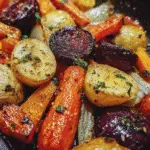
Roasted Root Vegetables Recipe
Ingredients
- 2 beets, preferably 1 red and 1 golden, peeled and chopped into 1-inch chunks
- 1 large carrot, roll cut into 1-inch chunks
- 3 parsnips, chopped into 1-inch chunks
- 1 medium sweet potato, chopped into 1-inch chunks
- 1 turnip, chopped into 1-inch chunks
- Extra-virgin olive oil, for drizzling
- 1 tablespoon chopped fresh rosemary
- 1 tablespoon chopped fresh sage leaves
- 1 tablespoon fresh thyme leaves
- Sea salt and freshly ground black pepper
Crispy Sage and Sage Oil
- 2 tablespoons extra-virgin olive oil
- 10 fresh sage leaves
Instructions
- Preheat the oven to 425°F and line two baking sheets with parchment paper.
- Place the beets and carrots on one baking sheet and the parsnips, sweet potato, and turnip on the other. Drizzle the vegetables with olive oil and sprinkle with the rosemary, sage, thyme, pinches of salt, and several grinds of pepper. Toss to coat and spread evenly on the baking sheets. Roast for 25 to 50 minutes, or until tender and browned around the edges. The parsnips, sweet potato, and turnip will bake for less time. The beet and carrot will roast longer.
- Make the crispy sage: Line a plate with paper towels. Heat the olive oil in a small saucepan until bubbling, add the sage leaves, stir, and cook until crisp, about 1 minute. Remove the leaves from the oil and transfer to the prepared plate to drain. Reserve the oil for serving with the vegetables.
- Remove the vegetables from the oven and toss with 1 tablespoon of the sage oil. Transfer to a platter and top with the crispy sage leaves.
Shopping Tips
Quality matters when it comes to vegetables. Here are some tips to ensure you select the best ingredients:
- Carrots: Look for firm carrots that are vibrant in color. Avoid those that are soft or have blemishes.
- Parsnips: Choose parsnips that are smooth and firm. Smaller ones tend to be sweeter.
- Sweet Potatoes: Opt for those that are heavy for their size, with smooth skin. Avoid ones with dark spots.
- Beets: Select beets that are small to medium-sized for tenderness. The greens should be fresh if still attached.
- Onions: Choose onions that are firm and without soft spots or sprouting.
Seasonality also plays a crucial role in flavor. Root vegetables are generally in season during the cooler months, making late fall through early spring the perfect time to enjoy them. However, many are available year-round, so check your local farmer’s market or grocery store for the best selection.
Substitutions and Alternatives
If you have dietary restrictions or simply want to try something different, there are plenty of substitutions available:
- Carrots: You can substitute with sweet potatoes or turnips for a different flavor.
- Parsnips: Try using rutabaga or even celery root for a unique taste.
- Sweet Potatoes: Regular potatoes can be used, but they will change the flavor and texture significantly.
- Beets: If beets aren’t your favorite, consider using radishes, which will roast down to a milder flavor.
These substitutions can help accommodate various dietary needs, such as gluten-free or vegan diets, while still allowing you to enjoy the essence of roasted root vegetables.
Storage Tips
To get the most out of your root vegetables, proper storage is key:
- Carrots and Parsnips: Store them in the refrigerator in a crisper drawer, preferably in a perforated plastic bag to maintain freshness.
- Sweet Potatoes: Keep them in a cool, dark place like a pantry or cupboard, away from other vegetables to prevent sprouting.
- Beets: Store unwashed beets in a damp cloth in the refrigerator. Once washed, they should be consumed quickly.
- Onions: Keep them in a cool, dark, and well-ventilated area away from potatoes, as they can spoil quicker together.
By following these tips, you can save money and reduce waste, making your roasted root vegetables not only delicious but also cost-effective. Always opt for organic when possible, as they may offer better flavor and fewer pesticides. However, conventional root vegetables can also be a great choice, especially if you wash them thoroughly before cooking. Now that you have your ingredients lined up, you’re ready to dive into the delicious world of roasted root vegetables!
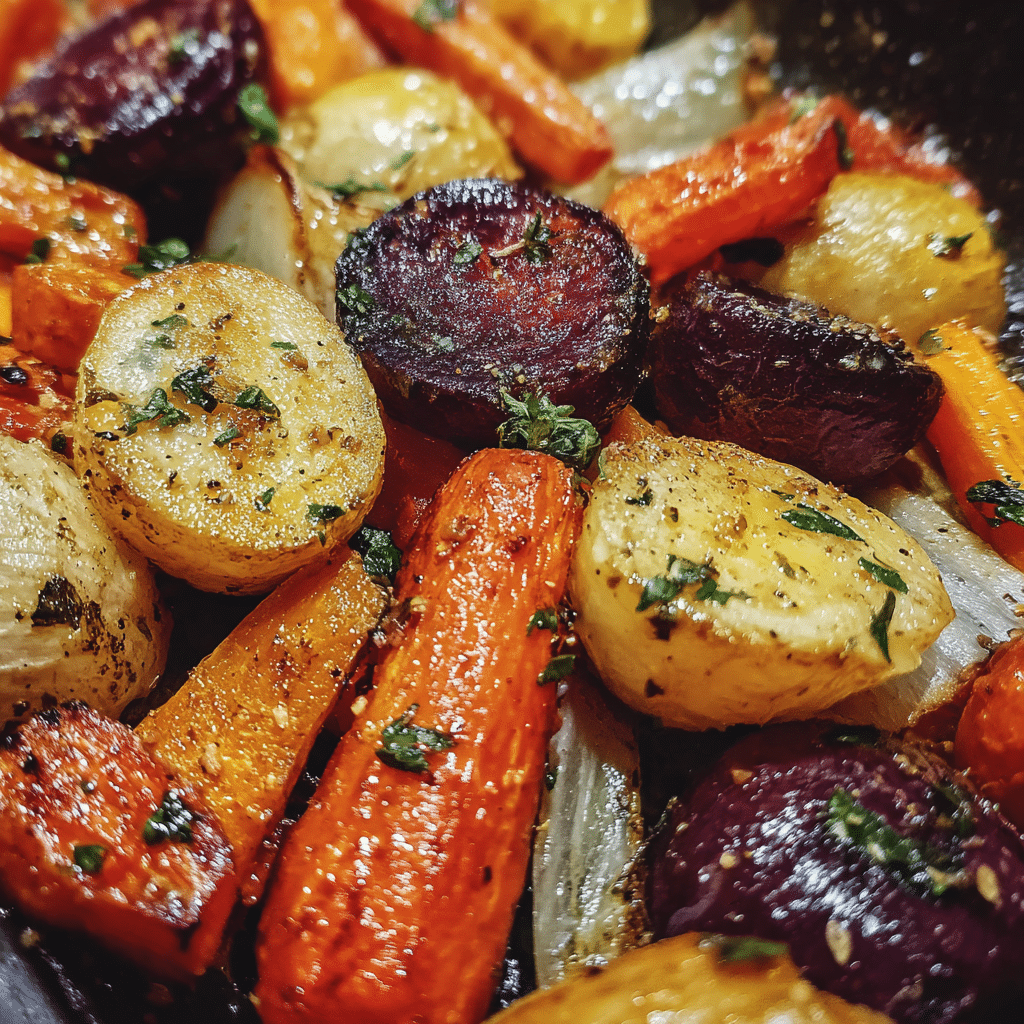
Detailed Step-by-Step roasted root vegetables Cooking Instructions
Creating a dish of perfectly roasted root vegetables is both an art and a science. With the right ingredients and techniques, you can achieve a harmonious blend of flavors and textures that will delight your taste buds. Let’s walk through the detailed steps to prepare this vibrant, hearty dish, ensuring that each bite is a celebration of seasonal produce.
Preparation Steps
Before we dive into cooking, it’s essential to prepare your ingredients properly. This not only makes the cooking process smoother but also elevates the final dish.
- Gather Your Ingredients: Start by assembling all your ingredients on the counter. This includes the root vegetables, olive oil, seasonings, and any additional ingredients you choose, like garlic or balsamic vinegar. Having everything within reach will make the process more enjoyable and organized.
- Wash and Peel: Thoroughly wash all the root vegetables under cold water to remove any dirt or debris. Using a vegetable peeler, peel the carrots, parsnips, and sweet potato. Beets can be messy, so consider wearing gloves to avoid staining your hands.
- Chop the Vegetables: Cut the vegetables into uniform pieces, about 1-inch cubes or wedges. This ensures even cooking. Remember, the smaller the pieces, the quicker they cook, so adjust based on your preferred texture. For instance, if you love a crispy edge, cut them smaller.
- Season: In a large mixing bowl, combine the chopped vegetables with olive oil, sea salt, black pepper, and your choice of herbs. Toss everything together until the vegetables are evenly coated. This step is crucial as it helps to build flavor right from the start.
- Preheat the Oven: Preheat your oven to 425°F (220°C). A hot oven is key to achieving that perfect roast—caramelized, crispy edges with a tender inside.
Cooking Process
Now that you’ve prepped your ingredients, it’s time to get cooking!
- Spread the Vegetables: Line a baking sheet with parchment paper for easy cleanup. Spread the seasoned vegetables in a single layer, ensuring they are not overcrowded. If they’re too close together, they’ll steam instead of roast, which can affect the texture.
- Roast: Place the baking sheet in the preheated oven. Roast the vegetables for about 30 minutes, stirring halfway through to ensure even cooking. You’ll want to keep an eye on them during the last few minutes. Look for a caramelized, golden-brown color, which indicates that they are perfectly roasted.
- Check for Doneness: Use a fork to pierce the largest pieces. They should be tender and easy to break apart. If they’re not quite there, give them another 5-10 minutes, watching closely to avoid burning.
- Optional Additions: If you’re using minced garlic or balsamic vinegar, add these in the last 5 minutes of roasting to enhance the flavor without burning the garlic.
Final Assembly
Once your roasted root vegetables are beautifully caramelized and fork-tender, it’s time to bring it all together!
- Remove from Oven: Carefully take the baking sheet out of the oven, using oven mitts. The aroma will be intoxicating, and you’ll likely be tempted to dive right in!
- Garnish: Transfer the roasted vegetables to a serving platter. You can sprinkle fresh herbs, like parsley or thyme, for a pop of color and freshness. A light drizzle of olive oil or balsamic glaze can add an extra layer of flavor.
- Serve: Enjoy your roasted root vegetables as a side dish to complement meats, or toss them into salads or grain bowls for a hearty vegetarian option. They also make a fantastic addition to breakfast—think roasted root vegetable hash with eggs!
By following these steps, you’ll create a stunning plate of roasted root vegetables that not only looks beautiful but also tastes fantastic. Remember, the key to perfect roasting lies in the preparation and the quality of your ingredients. Enjoy every bite and share your creations with friends and family—they’ll be asking for seconds!
Professional Tips and Techniques for roasted root vegetables
When it comes to preparing roasted root vegetables, the right techniques can elevate your dish from ordinary to extraordinary. As someone who has spent countless hours experimenting in the kitchen, I can assure you that mastering these professional tips and techniques will not only impress your family and friends but also enhance your culinary skills.
Professional Techniques
First and foremost, let’s discuss the importance of selecting the right vegetables. Classic choices for roasted root vegetables include carrots, parsnips, sweet potatoes, beets, and turnips. When choosing your vegetables, look for those that are firm and free of blemishes. Freshness matters—so if you can, visit a local farmer’s market to find the best seasonal produce.
Once you’ve gathered your vegetables, the next step is to cut them into uniform pieces. This ensures even cooking. Aim for pieces that are about one inch in thickness. If you’re using a variety of vegetables, consider their cooking times. For instance, carrots and parsnips roast faster than potatoes, so you might want to cut the potatoes smaller or add them to the roasting pan later.
Now, let’s talk about seasoning. A simple combination of olive oil, salt, and pepper works wonders, but don’t shy away from experimenting with herbs and spices. Rosemary, thyme, and garlic are fantastic companions to roasted root vegetables. Toss your chopped vegetables in a bowl with enough olive oil to coat them lightly, then add your chosen seasonings. Remember, the key is to enhance the natural sweetness of the vegetables without overpowering them.
When it comes to roasting, preheating your oven is crucial. A hot oven (around 425°F) creates that delightful caramelization on the outside while keeping the insides tender. Spread the vegetables in a single layer on a baking sheet lined with parchment paper to avoid sticking and to facilitate even cooking. If your pan is overcrowded, the vegetables will steam instead of roast, leading to less desirable results.
Troubleshooting Guide
Even the best chefs face challenges, so here’s a troubleshooting guide for common issues you might encounter while roasting your root vegetables.
- Too Soft or Soggy: If your vegetables turn out mushy, it’s likely due to overcrowding on the baking sheet or using too much oil. Remember, they need room to breathe!
- Uneven Cooking: If some pieces are burnt while others are undercooked, ensure your pieces are uniform in size and consider rotating the pan halfway through cooking.
- Not Enough Flavor: If your roasted root vegetables seem bland, it might be a case of under-seasoning. Don’t be afraid to taste and adjust seasoning before roasting.
For those looking to take their roasting to the next level, consider trying a technique called ‘blanching.’ By briefly boiling your vegetables before roasting, you can ensure they cook evenly and develop a beautiful color without losing their nutrients.
Presentation Tips
Presentation is half the battle when it comes to enticing your guests. Once your roasted root vegetables are beautifully caramelized and fragrant, it’s time to plate them up. A rustic wooden board makes for a charming serving platter, while a simple white plate can help the vibrant colors of your vegetables pop. For an extra touch, drizzle a balsamic reduction or a sprinkle of fresh herbs just before serving.
If you want to impress your guests even further, consider pairing your roasted root vegetables with a complementary wine. A light-bodied red like Pinot Noir or a crisp white like Sauvignon Blanc can enhance the flavors beautifully. Alternatively, a refreshing herbal tea can also balance the dish’s sweetness if you’re looking for a non-alcoholic option.
In terms of meal prep, roasted root vegetables can be made ahead of time. Simply roast, cool, and store them in an airtight container in the fridge for up to five days. Reheat them in the oven to regain that crispy texture. You can also scale your recipe up or down according to the number of guests you’re serving, making this dish incredibly versatile.
With these professional tips and techniques, you’ll be well on your way to mastering roasted root vegetables. Embrace the beauty of these earthy flavors and enjoy the process of transforming simple ingredients into a culinary masterpiece.
Creative Variations and Adaptations of roasted root vegetables
As a passionate home cook, I have found that one of the most exciting aspects of preparing roasted root vegetables is the endless possibilities for variations. Whether you’re looking to make a classic dish or venture into creative adaptations, there’s a world of flavors waiting to be explored.
Seasonal Variations
The beauty of roasted root vegetables lies in their seasonal availability. During the fall, you might find yourself reaching for hearty squash or sweet potatoes. In the winter, consider using rutabagas or parsnips, which add a lovely sweetness to your dishes. As spring approaches, don’t overlook baby carrots or small potatoes, which can add a fresh, crisp texture to your meals.
In the summer, you can even roast root vegetables on the grill. Just toss them in olive oil and your favorite spices, then wrap them in foil for a smoky flavor that pairs beautifully with grilled meats. This adaptability allows you to celebrate the changing seasons through your cooking, making every meal a reflection of nature’s bounty.
Dietary Adaptations
In our increasingly health-conscious world, it’s essential to offer options for those with dietary restrictions. The great news is that roasted root vegetables can easily accommodate various dietary needs. For those following a keto diet, focus on low-carb options like radishes and turnips. These can be roasted just like potatoes but with a fraction of the carbohydrates.
If you’re cooking for vegans, simply ensure your seasonings are plant-based—most spices are, but some blends may contain dairy or other animal products. Additionally, using tahini or a vegan yogurt sauce as a dressing can add a creamy element without compromising dietary choices.
For gluten-free eaters, roasted root vegetables are naturally gluten-free, making them an excellent side dish or main course option. Just be cautious about cross-contamination if you’re serving them alongside other dishes.
Creative Twists
Don’t be afraid to mix things up with your roasted root vegetables. One of my favorite adaptations is to incorporate international spices. For an Indian-inspired twist, try adding curry powder, cumin, and coriander for a fragrant and flavorful dish. Alternatively, a Mediterranean approach with garlic, oregano, and a squeeze of lemon can transport you right to the shores of Greece.
If you have leftovers, the possibilities are endless! Consider blending them into a creamy soup, mixing them into a salad, or even transforming them into a hearty hash with eggs for breakfast. You can also toss them into pasta or grain bowls for a nutritious lunch. The versatility of roasted root vegetables makes them a fantastic ingredient to keep on hand.
Another fun idea is to prepare a roasted root vegetable medley with a variety of colors and textures. Combine vibrant purple potatoes, bright orange carrots, and deep red beets for a visually stunning dish that’s as delightful to behold as it is to eat.
The world of roasted root vegetables is truly a canvas for creativity and exploration. Embrace the seasonal ingredients, adapt to dietary needs, and let your imagination run wild with flavors and presentations. Every time you roast these earthy delights, you are not only nourishing your body but also celebrating the joy of cooking.
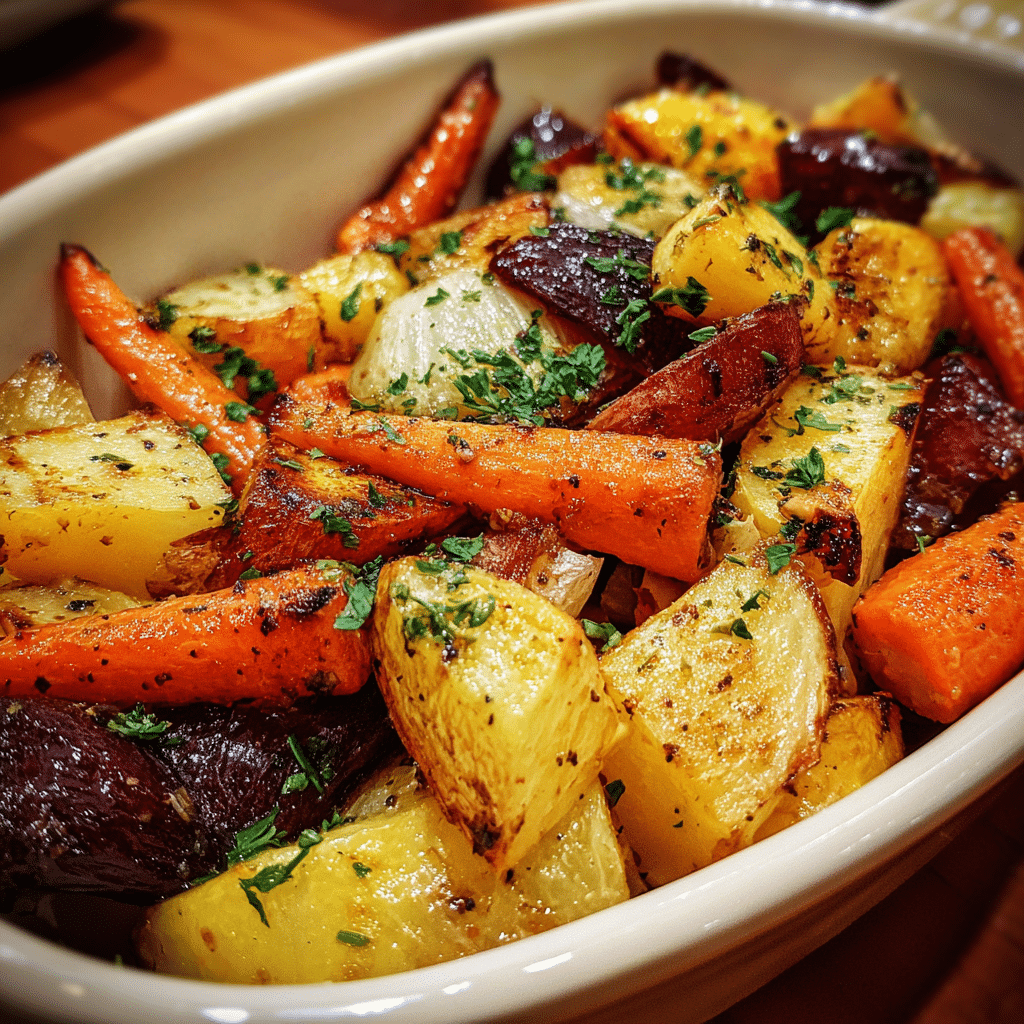
Storage, Reheating, and Meal Prep for roasted root vegetables
When it comes to enjoying roasted root vegetables, knowing how to store, reheat, and meal prep these vibrant, earthy delights can make a world of difference in your culinary experience. As someone who has spent countless weekends perfecting the art of roasting and savoring these hearty vegetables, I’ve learned a few tricks along the way that I’m excited to share with you. Let’s dive into the nitty-gritty of storage, reheating, and effective meal prep strategies for roasted root vegetables.
Short-term Storage
Once your roasted root vegetables have cooled down post-roasting, the first step is to store them properly to maintain their flavor and texture. For short-term storage, I recommend using airtight containers. Glass containers with tight-fitting lids are my personal favorite, as they prevent moisture from seeping in and keep the veggies fresh. If you’re using plastic containers, make sure they are BPA-free to avoid any chemical leaching.
In general, roasted root vegetables can be stored in the refrigerator for about 3 to 5 days. It’s best to keep them in the vegetable crisper drawer, where the humidity is higher, which helps maintain their moisture. Before placing them in the fridge, make sure they are completely cooled; storing hot vegetables can create condensation, leading to sogginess and spoilage.
To avoid having your vegetables go mushy, it’s a good idea to separate different types of root vegetables when storing. Carrots, beets, and potatoes can have different moisture levels, which can affect their texture when stored together. If you find that your roasted root vegetables have lost some of their crispness, a quick re-roast in the oven can bring back their original texture.
Freezing and Long-term Storage
If you want to enjoy your roasted root vegetables beyond the short term, freezing is a fantastic option. However, not all roasted vegetables freeze equally well. Vegetables like carrots, parsnips, and sweet potatoes tend to freeze beautifully, maintaining their flavor and texture. On the other hand, some root vegetables, like turnips, might not hold up as well once thawed.
To freeze your roasted root vegetables, follow these steps: first, let them cool completely. Next, portion them into freezer-safe bags or containers. Squeeze out as much air as possible to prevent freezer burn. Label each bag with the contents and date. I usually recommend using the vegetables within 3 to 6 months for the best quality, although they can last up to a year in the freezer.
When it’s time to enjoy your frozen roasted root vegetables, there’s no need to thaw them beforehand. You can simply toss them straight into the oven or a skillet for reheating. Just remember that reheating from frozen may take a bit longer.
Reheating Best Practices
Reheating your roasted root vegetables can be a bit tricky if you want to maintain that beautiful caramelized texture. I recommend using the oven for reheating, as it allows the vegetables to crisp up nicely. Preheat your oven to around 375°F (190°C), then spread the vegetables on a baking sheet. A drizzle of olive oil can also help revive their flavor and texture. Roast them for about 10-15 minutes, or until heated through and crisped up.
If you’re in a hurry, using a microwave is a quick option, but it may leave your vegetables a bit soggier than desired. To microwave, place the roasted root vegetables in a microwave-safe bowl, cover with a damp paper towel, and heat in short intervals, stirring in between, until warmed.
Meal prepping roasted root vegetables can save you so much time during the week. Consider roasting a big batch on Sunday night, which can then be stored in your fridge for easy additions to salads, grain bowls, or as a side dish throughout the week. Portion them into individual containers so you can grab and go.
One thing to remember is food safety. If you notice any off smells or signs of spoilage such as mold, it’s best to err on the side of caution and discard the vegetables. As for shelf life, generally, if stored correctly in the refrigerator, you can expect your roasted root vegetables to last about a week. However, the fresher they are, the better they will taste.
In conclusion, knowing how to store, freeze, and reheat your roasted root vegetables can significantly enhance your cooking experience and reduce food waste. With the right techniques, you can enjoy the delicious flavors of these nutritious veggies long after they’ve come out of the oven!
Nutritional Benefits and Health Information
When indulging in roasted root vegetables, it’s not just about the delightful flavors and textures; these vegetables also pack a nutritional punch! As someone who loves to explore the health benefits of my meals, I find it fascinating to delve into the nutritional aspects of these earthy delights. Let’s explore the nutritional benefits and health information surrounding roasted root vegetables.
Nutritional Profile
Root vegetables like carrots, potatoes, beets, and parsnips are not only delicious but also offer a variety of nutrients essential for maintaining a healthy diet. Typically, a serving of roasted root vegetables (about one cup) can contain the following nutrients:
- Calories: Approximately 100-150 calories, depending on the vegetable mix and cooking method.
- Carbohydrates: 25-35 grams, providing energy for your daily activities.
- Fiber: 4-6 grams, which aids in digestion and helps you feel full.
- Protein: 2-3 grams, important for muscle repair and growth.
Beyond macronutrients, root vegetables are rich in vitamins and minerals. For instance, carrots are an excellent source of vitamin A, which supports eye health, while beets are known for their high folate content, essential for cell function and tissue growth. Potatoes provide potassium, which is crucial for heart health and muscle function. Overall, roasted root vegetables are a fantastic addition to a balanced diet.
Health Benefits
Incorporating roasted root vegetables into your meals comes with a host of health benefits. One of the standout features of these vegetables is their high antioxidant content. Antioxidants help combat oxidative stress in the body, reducing the risk of chronic diseases such as heart disease and cancer.
Additionally, the fiber found in root vegetables aids in digestive health, promoting regular bowel movements and helping to maintain a healthy gut microbiome. This is especially important as a good digestive system can lead to improved overall health and wellness.
Moreover, the vitamins and minerals in roasted root vegetables can support immune function and enhance skin health. For instance, the beta-carotene in carrots can lead to healthier skin tone and improved vision, while the vitamin C found in many root vegetables is crucial for immune defense.
Dietary Considerations
When it comes to dietary considerations, roasted root vegetables are generally gluten-free and suitable for a variety of diets, including vegetarian, vegan, and paleo. However, it’s essential to be mindful of portion sizes, especially if you are watching your carbohydrate intake, as some root vegetables, like potatoes, can be higher in carbs than others.
For those following a low-carb or ketogenic diet, you might want to limit the quantity of starchy root vegetables like potatoes and sweet potatoes. Instead, focus on lower-carb options like turnips and radishes, which can still deliver great flavor when roasted.
As for allergen information, root vegetables are typically safe for most individuals. However, if you have specific allergies, it’s always a good idea to double-check the ingredients and consider any cross-contamination risks if purchasing pre-prepared options.
To make roasted root vegetables even healthier, consider modifying your recipes. Using less oil or opting for healthier oils like olive oil can reduce the calorie count. Adding herbs and spices like rosemary, thyme, or garlic can enhance flavor without adding sodium, making your meals aromatic and heart-healthy.
Comparatively, roasted root vegetables can be more nutritious than other side dishes such as mashed potatoes or creamy casseroles, which may contain added fats and calories. By choosing to roast your root vegetables, you not only retain their natural flavors but also ensure that you’re making a health-conscious decision for you and your family.
In summary, roasted root vegetables are a flavorful, nutritious, and versatile addition to any meal. With their rich nutrient profile and health benefits, they can easily fit into various dietary plans, making them an excellent choice for anyone looking to enhance their culinary repertoire while prioritizing health. So, the next time you roast a batch of these earthy delights, you can feel good knowing you’re not just treating your taste buds, but also nourishing your body!
Frequently Asked Questions About Roasted Root Vegetables
roasted root vegetables: jamie oliver
Jamie Oliver’s approach to roasted root vegetables emphasizes the importance of freshness and flavor. He often recommends using a variety of root vegetables such as carrots, parsnips, and sweet potatoes, as they each bring unique tastes and textures to the dish. To enhance the flavor, Oliver suggests tossing the vegetables in olive oil, sea salt, and fresh herbs like rosemary or thyme before roasting. For optimal results, place the vegetables in a single layer on a baking sheet to ensure even cooking and browning. Additionally, consider experimenting with different seasonings, such as garlic or smoked paprika, to add depth to the dish.
Crispy roasted root vegetables
To achieve crispy roasted root vegetables, start by cutting your veggies into uniform sizes to ensure even cooking. Preheat your oven to a high temperature, around 425°F (220°C), which helps to develop that coveted crispy texture. Before roasting, toss the vegetables in a generous amount of olive oil and seasonings, making sure they are well-coated. Using a baking sheet lined with parchment paper can also help prevent sticking and promote crispiness. For an extra crunch, give the vegetables space on the baking sheet; overcrowding can lead to steaming rather than roasting.
Roasted root vegetables recipe with balsamic
A roasted root vegetables recipe with balsamic vinegar can elevate the dish with its sweet and tangy flavor profile. Start by preparing a mix of your favorite root vegetables like carrots, beets, and turnips, cutting them into chunks. In a bowl, combine the vegetables with olive oil, balsamic vinegar, salt, and pepper, ensuring they are evenly coated. Roast them at 400°F (200°C) for about 30-40 minutes, stirring halfway through for even caramelization. For an added layer of flavor, consider drizzling a bit more balsamic vinegar over the vegetables just before serving, and sprinkle some fresh herbs like parsley or basil for a vibrant finish.
Roasted root vegetables and potatoes
Combining roasted root vegetables with potatoes creates a hearty and satisfying side dish. To ensure all the vegetables cook evenly, cut the potatoes and other root vegetables, such as carrots and parsnips, into similar sizes. Toss them with olive oil, salt, and your choice of herbs or spices for added flavor. Roasting at a temperature of around 425°F (220°C) will help achieve a nice golden-brown color. For best results, stir the mixture halfway through the roasting process, and consider adding garlic or onions for additional depth of flavor. This combination works beautifully alongside meats or as a standalone vegetarian dish.
Conclusion: Mastering the Perfect roasted root vegetables
Creating the perfect roasted root vegetables is more than just following a recipe—it’s about understanding the techniques, ingredients, and cultural significance behind this beloved dish. Throughout this comprehensive guide, we’ve explored everything from the historical origins to modern variations, ensuring you have all the knowledge needed to make this recipe your own.
Whether you’re a beginner cook or an experienced chef, the techniques and tips we’ve shared will help you create a roasted root vegetables that’s not only delicious but also meaningful. Remember that cooking is a journey of discovery, and each time you make this dish, you’ll learn something new.
We encourage you to experiment with the variations we’ve discussed, adapt the recipe to your dietary needs, and most importantly, share it with the people you love. Food has the incredible power to bring people together, and Roasted Root Vegetables is the perfect dish to create lasting memories around your dinner table.


